-

Recognizing Text-Based Traffic Signs
J. Greenhalgh and M. Mirmehdi
(2014). ArticleRecognizing Text-Based Traffic Signs. No.16, n. 3, pp. 1360-1369
We propose a novel system for the automatic detection and recognition of text in traffic signs. Scene structure is used to define search regions within the image, in which traffic sign candidates are then found. Maximally stable extremal regions (MSERs) and hue, saturation, and value color thresholding are used to locate a large number of candidates, which are then reduced by applying constraints based on temporal and structural information. A recognition stage interprets the text contained within detected candidate regions. Individual text characters are detected as MSERs and are grouped into lines, before being interpreted using optical character recognition (OCR). Recognition accuracy is...
We propose a novel system for the automatic detection and recognition of text in traffic signs. Scene structure is used to define search regions within the image, in which traffic sign candidates are then found. Maximally stable extremal regions (MSERs) and hue, saturation, and value color thresholding are used to locate a large number of candidates, which are then reduced by applying constraints based on temporal and structural information. A recognition stage interprets the text contained within detected candidate regions. Individual text characters are detected as MSERs and are grouped into lines, before being interpreted using optical character recognition (OCR). Recognition accuracy is vastly improved through the temporal fusion of text results across consecutive frames. The method is comparatively evaluated and achieves an overall Fmeasure of 0.87.
Read more Hide DOI: 10.1109/TITS.2014.2363167 -
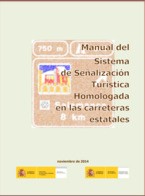
Manual del sistema de señalización turística homologada en las carreteras estatales
España. Ministerio de Fomento ; Ministerio de Industria, Energía y Turismo.
(2014). LlibreTechnical document that establishes the guidelines for the application of the touristic signaling system homologated on country roads (SISTHO), considering the material, legal, technical, and design-related operations for its implantation. This signaling system allows for warning passing citizens of places near their route that could be especially interesting for tourism, thus helping foster the existing touristic offer on the national territory, as well as facilitating travelers’ decision-making.
-
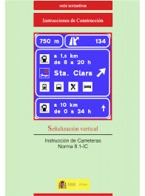
Señalización vertical. Instrucción de Carreteras, Norma 8.1-IC
España. Ministerio de Transportes, Movilidad y Agenda Urbana.
(2014). LlibreSeñalización vertical. Instrucción de Carreteras, Norma 8.1-IC.
Normative, technical document, whose content refers to the vertical signs of the Country’s Road Network. The basic principles of signals are established, as well as the general characteristics of type, visibility, protection, among others, all required by vertical signs. The particular, application-related and curve-beaconing specificities (maximum speed, overtaking, level crossing, etc.) are reported as well.
-

A VANET based intelligent road traffic signalling system. In Australasian Telecommunication Networks and Applications Conference (ATNAC)
Nafi, N. S., & Khan, J. Y.
(2014). ArticleIEEE. The 2013 International Joint Conference on Neural Networks (IJCNN). No.pp. 1-6
Real-time detection of traffic signs, the task of pinpointing a traffic sign's location in natural images, is a challenging computer vision task of high industrial relevance. Various algorithms have been proposed, and advanced driver assistance systems supporting detection and recognition of traffic signs have reached the market. Despite the many competing approaches, there is no clear consensus on what the state-of-the-art in this field is. This can be accounted to the lack of comprehensive, unbiased comparisons of those methods. We aim at closing this gap by the “German Traffic Sign Detection Benchmark” presented as a competition at IJCNN 2013 (International Joint Conference on Neural...
Real-time detection of traffic signs, the task of pinpointing a traffic sign's location in natural images, is a challenging computer vision task of high industrial relevance. Various algorithms have been proposed, and advanced driver assistance systems supporting detection and recognition of traffic signs have reached the market. Despite the many competing approaches, there is no clear consensus on what the state-of-the-art in this field is. This can be accounted to the lack of comprehensive, unbiased comparisons of those methods. We aim at closing this gap by the “German Traffic Sign Detection Benchmark” presented as a competition at IJCNN 2013 (International Joint Conference on Neural Networks). We introduce a real-world benchmark data set for traffic sign detection together with carefully chosen evaluation metrics, baseline results, and a web-interface for comparing approaches. In our evaluation, we separate sign detection from classification, but still measure the performance on relevant categories of signs to allow for benchmarking specialized solutions. The considered baseline algorithms represent some of the most popular detection approaches such as the Viola-Jones detector based on Haar features and a linear classifier relying on HOG descriptors. Further, a recently proposed problem-specific algorithm exploiting shape and color in a model-based Houghlike voting scheme is evaluated. Finally, we present the best-performing algorithms of the IJCNN competition.
Read more Hide DOI: 10.1109/IJCNN.2013.6706807 -
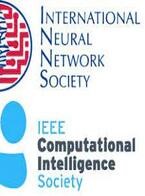
Detection of traffic signs in real-world images: The German traffic sign detection benchmark
S. Houben, J. Stallkamp, J. Salmen, M. Schlipsing and C. Igel
(2014). ArticleInternational Joint Conference on Neural Network (IJCNN). No.(2013) pp.1-8
Real-time detection of traffic signs, the task of pinpointing a traffic sign's location in natural images, is a challenging computer vision task of high industrial relevance. Various algorithms have been proposed, and advanced driver assistance systems supporting detection and recognition of traffic signs have reached the market. Despite the many competing approaches, there is no clear consensus on what the state-of-the-art in this field is. This can be accounted to the lack of comprehensive, unbiased comparisons of those methods. We aim at closing this gap by the “German Traffic Sign Detection Benchmark” presented as a competition at IJCNN 2013 (International Joint Conference on Neural...
Real-time detection of traffic signs, the task of pinpointing a traffic sign's location in natural images, is a challenging computer vision task of high industrial relevance. Various algorithms have been proposed, and advanced driver assistance systems supporting detection and recognition of traffic signs have reached the market. Despite the many competing approaches, there is no clear consensus on what the state-of-the-art in this field is. This can be accounted to the lack of comprehensive, unbiased comparisons of those methods. We aim at closing this gap by the “German Traffic Sign Detection Benchmark” presented as a competition at IJCNN 2013 (International Joint Conference on Neural Networks). We introduce a real-world benchmark data set for traffic sign detection together with carefully chosen evaluation metrics, baseline results, and a web-interface for comparing approaches. In our evaluation, we separate sign detection from classification, but still measure the performance on relevant categories of signs to allow for benchmarking specialized solutions. The considered baseline algorithms represent some of the most popular detection approaches such as the Viola-Jones detector based on Haar features and a linear classifier relying on HOG descriptors. Further, a recently proposed problem-specific algorithm exploiting shape and color in a model-based Houghlike voting scheme is evaluated. Finally, we present the best-performing algorithms of the IJCNN competition.
Read more Hide DOI: 10.1109/IJCNN.2013.6706807 -

A VANET based intelligent road traffic signalling system. In Australasian Telecommunication Networks and Applications Conference (ATNAC)
Nafi, N. S., & Khan, J. Y.
(2012). ArticleIEEE Xplore. Australasian Telecommunication Networks and Applications Conference (ATNAC). No.pp. 1-6
Road Traffic Information System is a key component of the modern intelligent transportation system. Road signaling systems can be made more efficient if real time information from different road sensors and vehicles can be fed in to a wide area controller to optimize the traffic flow, journey time, as well as safety of road users. The VANET architecture provides an excellent framework to develop an advanced road traffic signaling system. In this paper we present a unique VANET based road traffic signaling system that could significantly improve traffic flow, energy efficiency and safety of road users. The VANET based system has been developed using a distributed architecture by...
Road Traffic Information System is a key component of the modern intelligent transportation system. Road signaling systems can be made more efficient if real time information from different road sensors and vehicles can be fed in to a wide area controller to optimize the traffic flow, journey time, as well as safety of road users. The VANET architecture provides an excellent framework to develop an advanced road traffic signaling system. In this paper we present a unique VANET based road traffic signaling system that could significantly improve traffic flow, energy efficiency and safety of road users. The VANET based system has been developed using a distributed architecture by incorporating the distributed networking feature. In this paper we first introduce a new Intelligent Road Traffic Signaling System (IRTSS) system based on the VANET architecture. The paper presents some initial simulation results which are obtained by using an OPNET based simulation model. Simulation results show that the proposed architecture can efficiently serve road traffic using the 802.11p based VANET network.
Read more Hide DOI: 10.1109/ATNAC.2012.6398066 -
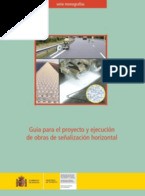
Guía para el proyecto y ejecución de obras de señalización horizontal
España. Ministerio de Fomento
(2012). LlibreGuía para el proyecto y ejecución de obras de señalización horizontal.
Technical document that provides a guide for the main issues to be considered during the planning, implementation, and maintenance of works of horizontal signaling on country’s road network. The document provides criteria, depending on the stage of the works, related to the requirements of road markings and their materials, machine equipment, previous operations, and everything related to the tracing of the works, as well as the control and condition of application and maintenance, among others.
-
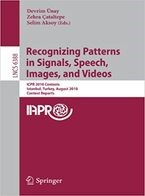
Road Sign Detection in Images: A Case Study
R. Belaroussi, P. Foucher, J. Tarel, B. Soheilian, P. Charbonnier and N. Paparoditis
(2010). Article20th International Conference on Pattern Recognition. No.(2010) pp. 484-488
Road sign identification in images is an important issue, in particular for vehicle safety applications. It is usually tackled in three stages: detection, recognition and tracking, and evaluated as a whole. To progress towards better algorithms, we focus in this paper on the first stage of the process, namely road sign detection. More specifically, we compare, on the same ground-truth image database, results obtained by three algorithms that sample different state-of-the-art approaches. The three tested algorithms: Contour Fitting, Radial Symmetry Transform, and pair-wise voting scheme, all use color and edge information and are based on geometrical models of road signs. The test dataset is...
Road sign identification in images is an important issue, in particular for vehicle safety applications. It is usually tackled in three stages: detection, recognition and tracking, and evaluated as a whole. To progress towards better algorithms, we focus in this paper on the first stage of the process, namely road sign detection. More specifically, we compare, on the same ground-truth image database, results obtained by three algorithms that sample different state-of-the-art approaches. The three tested algorithms: Contour Fitting, Radial Symmetry Transform, and pair-wise voting scheme, all use color and edge information and are based on geometrical models of road signs. The test dataset is made of 847 images 960×1080 of complex urban scenes (available at www.itowns.fr/benchmarking.html). They feature 251 road signs of different shapes (circular, rectangular, triangular), sizes and types. The pros and cons of the three algorithms are discussed, allowing to draw new research perspectives.
Read more Hide DOI: 10.1109/ICPR.2010.1125 -
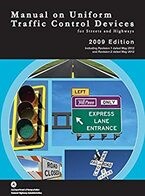
Manual on Uniform Traffic Control Devices (MUTCD)
Federal Highway Administration ; U.S. Department of Transportation.
(2009). LlibreManual on Uniform Traffic Control Devices (MUTCD).
Technical manual, mandatory to follow in the USA, in which the standards for the design, installation and use of vertical traffic signs, road marks and other signals are specified. These specifications include the shape, colors, and fonts used in road marks and signs. This extensive manual also establishes dispositions on the signaling used for temporary traffic control in school areas, crossroads with train rails, and infrastructure aimed at bikes.
-
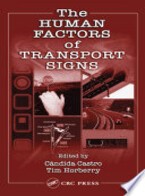
The human factors of transport signs
Castro, C., & Horberry, T. (Eds.)
(2004). LlibreThe human factors of transport signs.
This book explores the research on transportation signals. Even though it mainly focuses on the road environment and the general issues of signaling, the authors also approach specific topics on train transportations and other transport modes. The international collaborators discuss the drivers’ psychology and their interaction with transport signals, as well as the strength and weakness of the different types of signs.
ISBN: 0-203-34060-4






